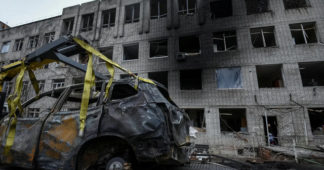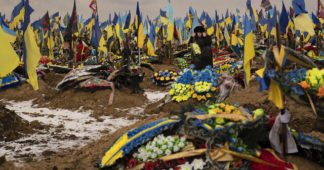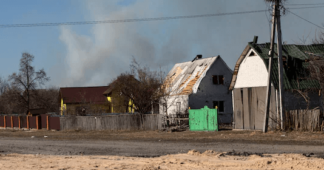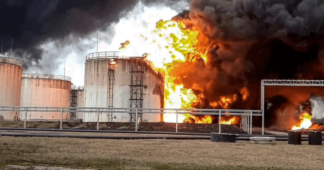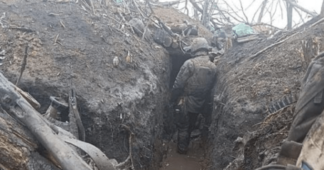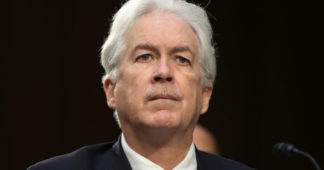Time Is Running Out in Ukraine
Kyiv Cannot Capitalize on Russian Military Weakness Without U.S. Aid
By Dara Massicot
Two years after Russia’s invasion, Ukraine and its Western supporters are at a critical decision point and face a fundamental question: How can further Russian advances on the battlefield be stopped, and then reversed? After capturing the ruined city of Avdiivka, Russian forces are moving forward fitfully in other areas along the front. Russian advantages in manpower, materiel, and defense production have grown in the past year, whereas U.S. ammunition deliveries have been throttled and are at risk of being curtailed almost entirely because of an impasse over funding in the U.S. Congress. Supplies of critical munitions for frontline Ukrainian units are dwindling, and soldiers are being forced to ration. Some units are experiencing significant manpower shortages.
The current battlefield dynamics have no single cause; they are mostly rooted in decisions that were made since the fall of 2022. When Russia mobilized its war economy, the West did not, and Ukraine could not. When Russia constructed a network of defensive fortifications hundreds of miles long and multiple layers deep, Ukraine did not. Russia obtained more than a million (by some estimates, three million) artillery shells and thousands of drones from its partners, including Iran and North Korea. The West could not match that, having already reached the bottom of the barrel of similar resources. Moscow has gone to great lengths to regenerate personnel and replenish its forces, whereas Kyiv has yet to fully mobilize.
Without a surge in Western military aid and major changes to Kyiv’s strategy, Ukraine’s battlefield position will continue to worsen until it reaches a tipping point, possibly by this summer. On the present course, in which Ukrainian ammunition and manpower needs are not met, Ukrainian units are likely to hollow out, making Russian breakthroughs a distinct possibility. But this is no time for despair; it is time for urgent action. Russian forces have vulnerabilities that can be exploited and advantages that can be eroded over time, but only if Ukraine gets what it needs now.
DAMAGED BUT DANGEROUS
To create an effective strategy that capitalizes on Russia’s weaknesses, Western policymakers and observers need to see the Russian military for what it is now: not the hapless, broken, depleted force that many wished it would be by now but a still dangerous organization advancing in Ukraine. Understanding the current state of Russian combat power means processing contradictory information and answering a number of complex questions. Is the Russian military in decline, reliant on Soviet-era equipment, conscripted convicts, troops who abuse methamphetamines or other drugs, and foreign-supplied drones and artillery shells in order to push forward at high cost? Or is it an increasingly adaptive and well-resourced organization, able to overpower Ukrainian positions all along the frontline?
The trouble is that both descriptions are partly accurate. Perhaps the clearest and most practical view of the Russian military is an anecdote told by Ukrainian soldiers and recently shared with The New York Times: the Russian army is neither good nor bad, just long.
Continue reading at www.foreignaffairs.com
We remind our readers that publication of articles on our site does not mean that we agree with what is written. Our policy is to publish anything which we consider of interest, so as to assist our readers in forming their opinions. Sometimes we even publish articles with which we totally disagree, since we believe it is important for our readers to be informed on as wide a spectrum of views as possible.
